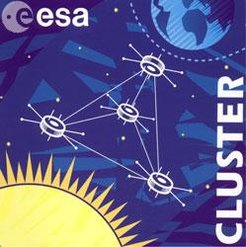
Space Physics of Near-Earth Environment
The solar system is comprised of the Sun, the planets, their atmospheres and plasma environs, the small bodies, e.g. comets, down to dust particles, interstellar matter intruding from outside, and the cosmic radiation. At MPE we mainly investigate the plasma physical phenomena in the solar atmosphere, in the Earth's magnetosphere and it's boundaries, and in interplanetary space. ACR

With the CLUSTER mission with its 4 spacecraft we are at the advent of a new age in magnetospheric physics. We are, in particular, interested on the structure and dynamics of the magnetopause, on the comparison between electric fields at Cluster altitudes and in the polar ionosphere, on the acceleration of O+ ions of ionospheric origin in the polar regions, and on acceleration processes at the Earth's bow shock. New insight into auroral plasma physics is also obtained from correlative measurements of the FAST and Cluster spacecraft. With our experiments onboard SAMPEX, SOHO, and ACE we measure cosmic rays and energetic ions in the solar wind. Of particular interest is here the ionic charge composition of suprathermal ions accelerated in solar flares or at interplanetary shocks.
These in-situ measurements are complemented by theoretical investigations and numerical simulations. These include, for example, reconnection studies, instability analysis of plasma turbulence, studies of the physics of mirror modes as a superconducting analogue in high-temperature plasma, and numerical full particle electromagnetic (PIC) simulation of the quasi-parallel and quasi-perpendicular shocks that are observed throughout the solar system, as for example at the bow shock of the Earth and the termination shock of the heliosphere.
